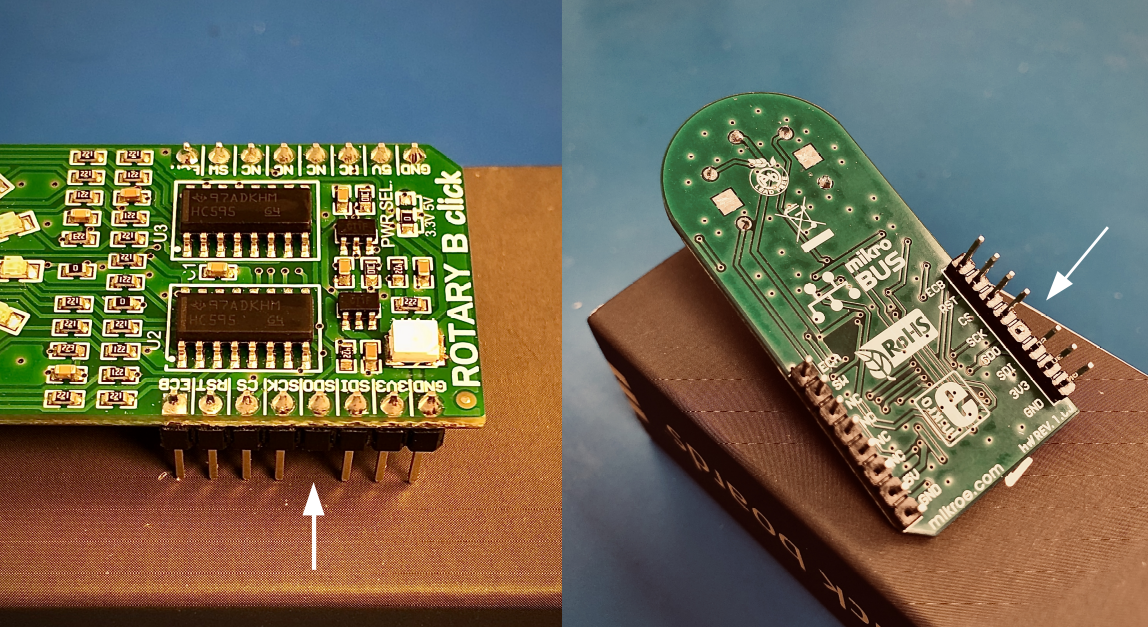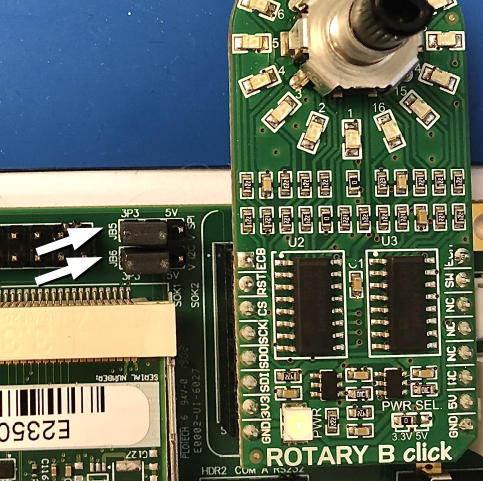Difference between revisions of "Getting Started with the DEV-IOT6U"
m |
|||
| Line 9: | Line 9: | ||
<!-- /*********************************************************************************************************/ --> | <!-- /*********************************************************************************************************/ --> | ||
This page outlines a basic guide to getting starting using the DEV-IOT6U. | This page outlines a basic guide to getting starting using the DEV-IOT6U. | ||
| + | * [[DEV-IOT6U | DEV-IOT6U Hardware Landing Page]] | ||
<!-- /*********************************************************************************************************/ --> | <!-- /*********************************************************************************************************/ --> | ||
| Line 66: | Line 67: | ||
== Demo == | == Demo == | ||
Proceed to this page for an example demo of the MikroBus Rotary B Click on the DEV-IOT6U: </br> | Proceed to this page for an example demo of the MikroBus Rotary B Click on the DEV-IOT6U: </br> | ||
| − | [[Example_MikroBus_Rotary_on_the_DEV-IOT6U]] | + | *[[Example_MikroBus_Rotary_on_the_DEV-IOT6U]] |
== Further Information == | == Further Information == | ||
| Line 73: | Line 74: | ||
{{:Templateimpl:whatnext | initials=BS | title=Getting Started with the EMAC OE SDK | desc=Basic tutorial for using the EMAC OE SDK. | project=OE 5.0 }} | {{:Templateimpl:whatnext | initials=BS | title=Getting Started with the EMAC OE SDK | desc=Basic tutorial for using the EMAC OE SDK. | project=OE 5.0 }} | ||
| + | * [[DEV-IOT6U | DEV-IOT6U Hardware Landing Page]] | ||
* [[Getting_Started_with_the_EMAC_OE_SDK | Getting Started with the EMAC OE SDK]] | * [[Getting_Started_with_the_EMAC_OE_SDK | Getting Started with the EMAC OE SDK]] | ||
* [[Getting_Started_With_Qt_Creator|Getting Started With Qt Creator]] | * [[Getting_Started_With_Qt_Creator|Getting Started With Qt Creator]] | ||
* [[Getting_Started_With_Minicom|Getting Started with Minicom]] | * [[Getting_Started_With_Minicom|Getting Started with Minicom]] | ||
Revision as of 13:26, 14 September 2020
This page outlines a basic guide to getting starting using the DEV-IOT6U.
Contents
General Information
What Comes with the Development Kit
- SoM-IMX6U-120R2 (528MHz iMX6UL 4GB eMMC, 128MB SoM, connected to Carrier Board)
- SoM-112ES-131R1 (Dlx Carrier with Wifi/BT & Audio)
- 5V 3A Wall Power Supply
- 10 Pin Com to DB9 Cable 12"
- RJ45 to RJ45 Ethernet Cable 7'
- USB2.0A Male to Micro-USB Male 6'
- 2.4 & 5GHz 100mm Wifi Antenna
- MikroBus ROTARY B click
| NOTE |
| Do to a design flaw in the MikroBus Rotary B Click, the card does not allow another SPI device to be present on the SPI Bus. The SoM-IMX6U uses the SPI Bus and the presence of MikroBus Rotary B Card prohibits the SOM from booting. To alleviate this issue, the pin labeled “SDO” must be cut and jumpers JB5 and JB6 on the Dev Kit Carrier Board (SoM-112) must be set to 3P3 (see figures below) |
Tools Required
- Desktop PC (Linux or Virtual Linux Machine)
- Instructions for Downloading a Virtual Machine with EMAC OE SDK pre-installed
Setup
1. Install EMAC OE SDK on your computer.
- Installation options are linked HERE.
2. Make the following cable connections using the cables provided:
- Board Micro-USB to USB Desktop
- Board Ethernet to Ethernet Network
- 5V Wall Power Supply to Board Power (may be left unplugged from wall until Step 3)
3. Open Minicom and create a terminal session with the DEV-IOT6U
- After supplying power, boot messages will be displayed followed by a log in prompt.
- somimx6ul login: root
- password: emac_inc
- Use command "ifconfig" in the terminal session to find the device's IP address that can be used during the development process.
Development
There are two options in development with this device:
1. Using the EMAC OE SDK on terminal. [ Getting Started with the EMAC OE SDK ]
- or
2. Using the EMAC OE SDK on Qt Creator. [ Getting Started With Qt Creator ]
MikroBus Rotary B Click
EMAC has provided a MikroBus Rotary B Card which provide a number of LEDs and a Rotary Switch to allow for easy demonstration and interaction of the Eval Kit. Demo/Example Software is provided that interacts with this Card. This Software can be modified by the user as an exercise in using the development tools.
NOTE: Do to a design flaw in the MikroBus Rotary B Card which does not allow another SPI device to be present on the SPI Bus. The SoM-IMX6U uses the SPI Bus and the presence of MikroBus Rotary B Card prohibits the SOM from booting.
To alleviate this issue, the pin labeled “SDO” must be cut and jumpers JB5 and JB6 on the Dev Kit Carrier Board (SoM-112) must be set to 3P3 (see figures below).


Demo
Proceed to this page for an example demo of the MikroBus Rotary B Click on the DEV-IOT6U: